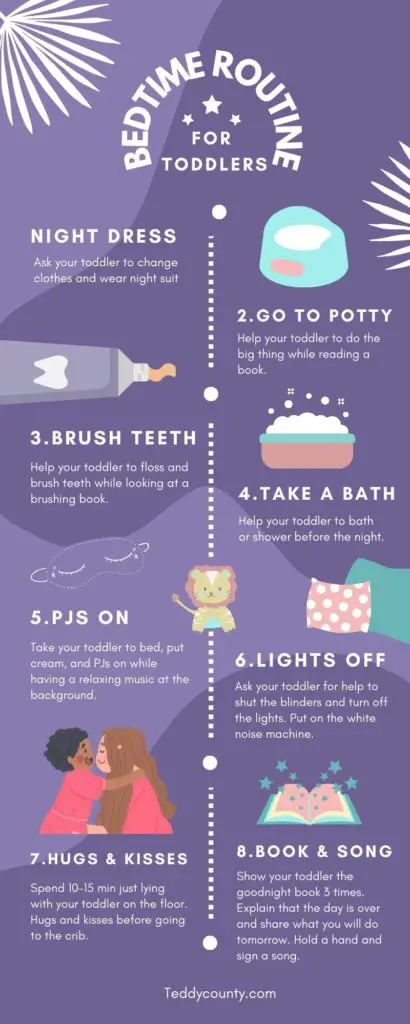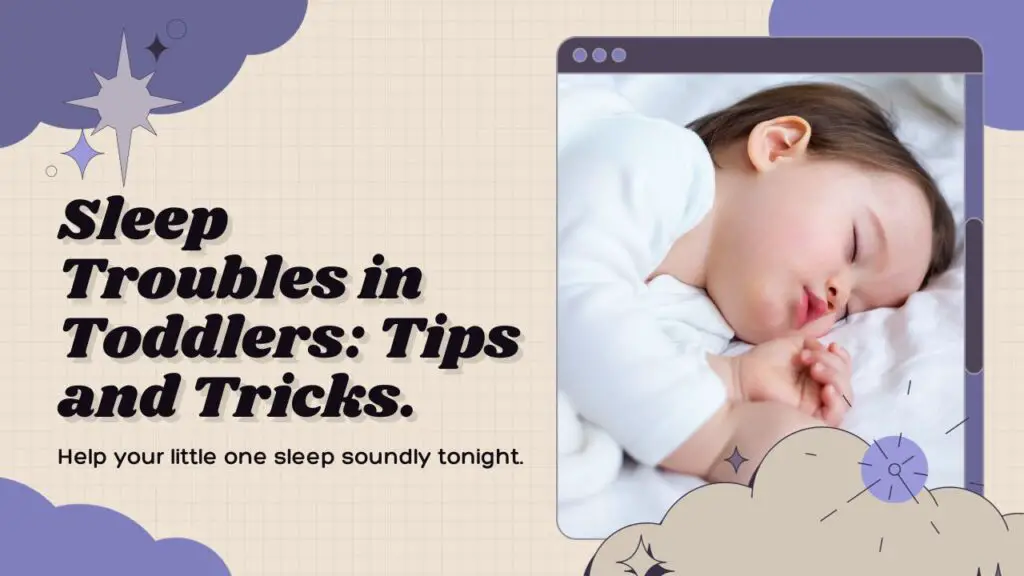Dear tired parent,
I understand the frustration and exhaustion you may be facing while dealing with your toddler’s sleep troubles. It’s a challenge that many parents encounter, and you are not alone. In this article,” How to Deal with Toddler Sleep Troubles” we will explore the reasons behind sleep issues in toddlers and provide practical solutions to help your little one get a good night’s sleep.
What causes sleep troubles in toddlers?
Sleep troubles in toddlers can be attributed to various factors. Let’s take a look at some of the common causes:
1. Developmental Milestones: Toddlers go through significant developmental changes, such as learning to walk or talk. These milestones can disrupt their sleep patterns as their brains are busy processing new skills.
Example: Sarah, a mother of a 2-year-old, noticed that her daughter’s sleep became erratic when she started potty training. The anxiety of using the potty at night was affecting her sleep.
2. Nightmares and Night Terrors: Toddlers have vivid imaginations, which can lead to nightmares and night terrors. These can cause nighttime awakenings and a fear of going back to sleep.
Example: James, a father of a 3-year-old, recounted how his son would wake up crying and scared in the middle of the night, struggling to fall back asleep after a vivid nightmare.
3. Teething: The discomfort from teething can lead to pain and restlessness, making it difficult for toddlers to sleep peacefully.
Example: Lisa, a mother of a 1-year-old, shared how her son’s teething troubles disrupted his sleep, leading to frequent wake-ups and fussiness.
4. Routine Changes: Any alterations in your toddler’s daily routine, like a change in nap times, meal schedules, or even transitioning from a crib to a bed, can affect their sleep patterns.
Example: Mark and Emily, parents of a 2-year-old, found that their son’s sleep issues began when they moved him from his crib to a toddler bed. He had newfound freedom to get out of bed whenever he pleased.

How to Fix Sleep Troubles in Toddlers
Now, let’s discuss effective strategies to address your toddler’s sleep troubles:
1. Establish a Consistent Bedtime Routine: Create a calming bedtime routine that includes activities like reading a book, taking a warm bath, and a soothing lullaby. Consistency is key to signaling to your toddler that it’s time to sleep.
Example: Sarah started a soothing bedtime routine for her daughter, including reading a story and cuddling before lights out. It helped her daughter feel secure and ready for sleep.
2. Address Nightmares and Night Terrors: If your toddler has a nightmare, provide comfort and reassurance. Try to talk to them about their dreams during the day to alleviate their fears.
Example: James began discussing happy stories with his son during the day, which helped reduce the frequency of nightmares.
3. Manage Teething Discomfort: Offer teething toys, cold washcloths, or teething gels to alleviate pain. This can help your toddler sleep more comfortably during teething periods.
Example: Lisa gave her son a cold teething ring before bedtime, which provided relief and allowed him to sleep better.
4. Keep a Consistent Schedule: Maintain a regular daily schedule, including naptimes and meal times. A consistent routine can help regulate your toddler’s sleep.
Example: Mark and Emily set a fixed schedule for their son with consistent nap and meal times, which gradually improved his sleep patterns.
5. Ensure a Comfortable Sleep Environment: Make sure your toddler’s room is conducive to sleep. Keep it dark, quiet, and at a comfortable temperature.
Example: John and Mary, parents of a 2-year-old, added blackout curtains to their son’s room to create a darker environment, which helped him sleep better.
6. Limit Screen Time Before Bed: Avoid screens like smartphones or tablets before bedtime, as the blue light can interfere with your toddler’s ability to fall asleep.
Example: Laura, a mother of a 4-year-old, reduced screen time for her daughter an hour before bedtime, which improved her sleep quality.

Creating a Comforting Bedtime Environment
1. Security Objects: Many toddlers find comfort in having a favorite stuffed animal or blanket with them when they sleep. These security objects can provide a sense of reassurance.
Example: Emma, a mother of a 2-year-old, noticed that her son’s teddy bear helped him settle down and sleep more soundly.
2. White Noise Machines: Consider using white noise machines to drown out any disruptive sounds that might wake your child during the night.
Example: Michael and Lisa used a white noise machine in their toddler’s room, which helped him stay asleep despite noise from the neighboring apartment.
Addressing Nighttime Fears
1. Night Lights: If your toddler is afraid of the dark, use a dim night light to provide a sense of security without disrupting their sleep.
Example: Jessica and David, parents of a 3-year-old, placed a soft night light in their daughter’s room, which helped her feel safer and sleep better.
2. Empathy and Reassurance: Always validate your child’s feelings and fears. Reassure them that you are nearby and that it’s okay to feel scared sometimes.
Example: Brian, a father of a 4-year-old, comforted his daughter by explaining that he was just in the next room and would come if she needed him.
Conclusion
In the journey of parenting, coping with toddler sleep troubles is undoubtedly a significant challenge, but with love, consistency, and understanding, you can navigate these rough nights. Each child is unique, and it may take time to find the right solutions for your specific situation. As you address their fears, create a comfortable sleep environment, and maintain a consistent routine, you’re working towards ensuring that your toddler can enjoy peaceful and restful nights.
Remember that these sleep troubles are just a phase, and your child will eventually grow out of them. The key is to create an environment that nurtures their sense of security and helps them build healthy sleep habits that will serve them well in the future. As a parent, you’re doing an incredible job of guiding your child through these sleep challenges, and with your continued efforts, both you and your toddler will soon be enjoying restful nights once again. Sweet dreams to you and your little one!



